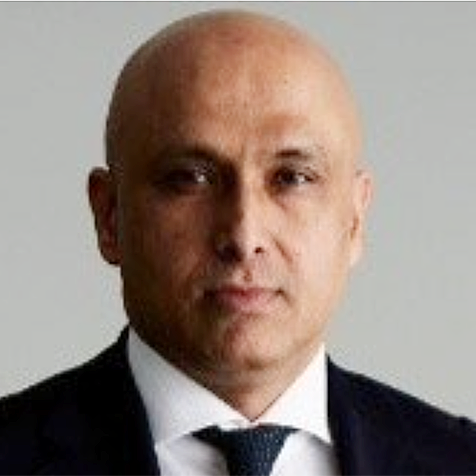 |
|
| Barker: Data and disclosure of Asian corporates are improving |
Investors in the new World Bank Green Growth Bond, announced on February 12 2015 in Hong Kong, will not only gain from exposure to European equities while their principal investment is protected, but will also feel good about lending a hand (and their money) towards solving the world’s environmental problems.
The structured product, which the World Bank issued in collaboration with BNP Paribas, combines the triple-A rating of the United Nations-backed international financial organization with an upside growth potential through a call option on an equity index, and with what Michael Bennett of the World Bank calls “the green element”.
Far from greenwashing though – a practice that sees majority of funds spent on a thin veneer of environmental responsibility – the World Bank Green Growth Bond is the real deal. The funds raised through its issuance, just like those from other issues of the bank’s green bonds, support projects that address the challenges of climate change and environmental pollution. On top of that, the upside return potential is provided by the Ethical Europe Equity Index, ensuring that the investors’ money doesn’t support weapons, gambling, tobacco or nuclear industry. (Oil and gas companies, however, are allowed.)
The green growth bond issue is breaking new ground in Asia. While this and other forms of sustainability investing are popular in Europe and North America, Asia has been lagging behind. The Export-Import Bank of Korea (Kexim) floated a green bond in 2013 and Taiwan’s Advanced Semiconductor Engineering followed with an issue in July 2014. With its new structured product, the World Bank and BNP Paribas are targeting investors in Hong Kong, Singapore and Taiwan.
“Most markets [in Asia] remain in the early stages of development” of sustainable investing, writes Jessica Robinson, CEO of the Association for Sustainable & Responsible Investment in Asia (ASrIA), in the organization’s report published in December 2014.
While investors and money managers are increasingly interested in environmental, social and corporate governance (ESG) issues, they lack information on which to base their investment decisions. “Comprehensive requirements for disclosure on sustainability and ESG issues are critical for progress in the market,” notes Robinson.
The World Bank and BNP Paribas chose to launch here a product linked to European equity in order to benefit from the well-established ESG reporting framework and expertise. At the same time the banks leverage their existing products, which first launched in Europe in August 2014.
 |
|
| Robinson |
ESG disclosure levels in Asia lag behind those in Europe and North America, and no equivalent ethical equity index exists today. Robert Barker, head of CSR and sustainable investment solutions, global markets Asia Pacific at BNP Paribas is hopeful that this is going to change soon.
“The data disclosure of Asian corporates is improving through a number of initiatives from stock exchanges. This will aid creation of an index of best-in-class,” Barker says. “As the regulatory environment develops, “we will be looking at offering Asian equity exposure under the green bond program for future products,” he adds.
In addition to regulatory changes, much remains to be done about raising awareness of environmental challenges and ways in which investors can make a difference. ASrIA was created in 2001 for exactly that purpose, with the mission “to promote the development of sustainable financial markets and systems in Asia”.
The organization publishes a biennial Asia Sustainable Investment Review in which it analyzes progress made in the area as well as changing attitudes of Asia-based investors. The December 2014 issue of the review notes that “sustainable investment assets in Asia (ex-Japan) stood at US$44.9 billion” at the end of 2013, a 22% year-on-year increase since 2011.
The assets are concentrated mainly in Malaysia (34%), Hong Kong (25%), South Korea (19%) and Singapore (13%). These numbers, however, include Islamic funds on the basis of their use of exclusion/negative screening in investment decision- making.
This illustrates one of the challenges encountered when talking about sustainability investing – its definition. The one introduced by the Global Sustainable Investment Alliance, of which ASrIA is a founding member, and used in its report, is based on the criteria that encompass techniques used to screen potential investments, themes as well as degree and direction of corporate engagement and shareholder action.
Issues of climate change and environmental pollution are increasingly dominating the landscape of sustainable investing in Asia. “We see the sustainability challenges facing Asia as really coming from the climate challenge,” Robinson tells The Asset, but the area is much broader. “We are also talking a lot about natural resources, natural capital, efficient use of resources,” she adds.
Another challenge is the limited capacity within the financial industry. “In Asia, there are not a lot of people that understand ESG-type risks and know-how to build that into the investment process,” she says.
This varies within the industry. Insurance stands out in this area, since environmental risk is its bread and butter. “Insurance companies are starting to do some really good work,” observes Robinson. “They have data, they have analysis that’s incredibly useful to the industry as a whole, for example, on extreme weather events, particularly in Asia,” she adds.
But the biggest challenge may be the changing of the mindset of Asian financial markets about the concept of economic growth. Although China’s GDP no longer grows at 10% a year, high levels of expansion are still the goal of many governments in the region. “We need to slow down and think about the environmental impact of this growth,” comments Robinson.
The momentum for change is likely to be from investors themselves. While much of the demand for sustainable investments comes from Europe, the first signs of this are visible in Asia as well. Robinson says that she has started seeing interest in this segment from second-generation high net worth individuals and family offices. “The younger generation will be concerned about these issues and will require their assets to be managed in a different way,” she remarks.
Mindset challenge
Some of the changes in mindset need to address the focus on short term, especially among equity investors. “ESG issues tend to play out over longer time frames,” says Charles Yonts, head of sustainable research at CLSA, a Hong Kong-based broker. “Even if fund managers want to look long-term, they are judged on shorter performance metrics, like six months,” he notes. Debt investors and private equity are more likely to incorporate ESG criteria into their decision making, he adds.
Of the three components of ESG, corporate governance has gained the most traction in Asia. “Our big clients insist that we incorporate governance, environmental and social factors into stock rating,” according to Yonts. CLSA incorporated corporate governance into the ratings of all companies it covers 12 years ago. Since 2014, each company is also rated on environmental and social issues.
In evaluating a company from the ESG point of view, analysts must look beyond inspiring images and proclamations on the cover of its annual report. “We’re looking for things that will have a material impact on the balance sheets on these companies,” says Yonts. “We’re trying to assess how aware the companies are of these issues, how well prepared they are to deal with them, and can we measure the success or failure in executing their strategy.”
In the end, in the world of finance, the return on investment matters more than good intentions or efforts to make the world a better place. The two, however, appear to be related. “Companies that are planning for the long term tend to look at the environment as a real issue,” notes Yonts. From planning for changes in water supply, to curbing atmospheric pollution, to ensuring worker safety, companies that consider ESG issues in their strategy tend to perform better long term. “ESG is another way to get alpha,” remarks Yonts.
The goal of ESG ratings and products like the World Bank Green Growth Bond is to shift capital to projects and companies that work towards addressing environmental and social challenges. This goal is of particular importance in Asia, partly because the continent’s population is likely to be disproportionately affected by climate change and pollution, and partly because financial markets in the region lag behind the developed world in this aspect.
The concept and practice of sustainability investing have undergone an evolution since they first became prominent with the environmental movements of the 1970s. Acronyms have changed – ESG has replaced SRI or Socially-Responsible Investing as the preferred term – and the image of “a bunch of guys with beards sitting around in Birkenstocks, singing ‘Kumbaya’ by the campfire”, in the words of CLSA’s Yonts, is a thing of the past.
No longer perceived as akin to philanthropy, sustainability investing is poised to enter the mainstream. “Carbon pricing is a universal concept, it cannot be put into one area of investment management,” says Barker. “We see the green bond development as meeting that broader appeal of this theme for a mainstream investor rather than just a particular type of investor or particular style of investment, which is the ESG or SRI area.”
Policy changes will affect the development of sustainable investment market. As of January 1 2015, China has a new environmental law, with more teeth than its precursor. It expands the requirements of environmental impact assessment to a bigger range of projects, it allows NGOs to initiate legal action against polluters and introduces more severe consequences for violations. It remains to be seen how these will affect the development of sustainable finance in China and in the region, but the potential is vast. “There’s definitely plenty of interest in investing in the environmental sector in China,” observes Yonts. “It’s really about trying to nail down companies that are doing well by doing good.”





.jpg)
.jpg)


